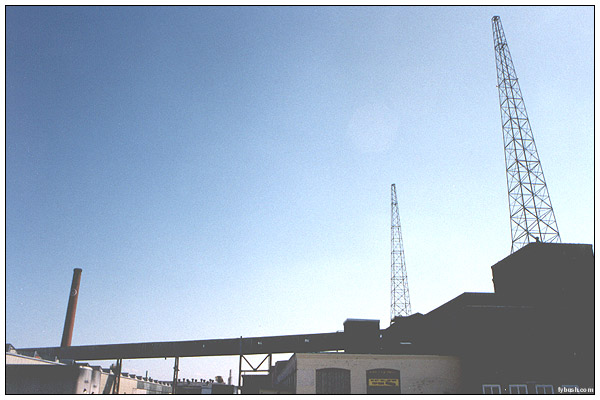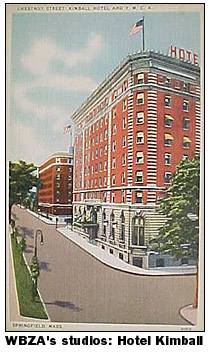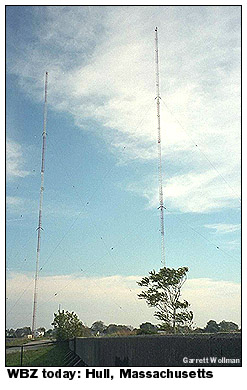September 19-26, 2001
WBZ at Eighty

Here's a true relic: one of the last broadcast sites from
the very dawn of the industry that's still standing. This is
the old Westinghouse works on Page Boulevard in East Springfield,
Mass., where a little 100-watt station called WBZ began operations
on September 15, 1921, with a remote broadcast from the Eastern
States Exposition (the "Big E") in Springfield.
 WBZ was one of four
stations Westinghouse built in those early days of radio; the
others, of course, were KDKA in Pittsburgh, WJZ in Newark and
KYW in Chicago, all located (with the exception of Chicago) at
Westinghouse manufacturing plants. WBZ was one of four
stations Westinghouse built in those early days of radio; the
others, of course, were KDKA in Pittsburgh, WJZ in Newark and
KYW in Chicago, all located (with the exception of Chicago) at
Westinghouse manufacturing plants.
WBZ wasn't alone on the airwaves, even then; historian Donna
Halper, among others, has shown that listeners in Boston were
already hearing innovative programming on stations like 1XE/WGI
in Medford Hillside.
But WBZ quickly became a force to be reckoned with, at least
in Springfield, moving its studios downtown to the Hotel Kimball
on Chestnut Street and boosting power to 15,000 watts by mid-1924.
That same year, Westinghouse moved to improve WBZ's signal
in Boston, 100 miles away, by erecting a 250-watt transmitter
atop the Hotel Brunswick under the calls WBZA.
By 1931, it was clear where WBZ's real market was, and so
WBZ and WBZA switched locations. WBZ's 15,000 watt transmitter
was moved to Millis, 20 miles west of Boston, with studios moving
to the Hotel Bradford from the Statler, which had succeeded the
Brunswick in mid-1927. The WBZA calls moved to the East Springfield
transmitter, which dropped power to 1,000 watts, serving essentially
to fill in a weak area of coverage from Millis.
 WBZ increased power
to 50,000 watts by 1933. In 1940, it moved its transmitter from
Millis to a new site on the edge of the Atlantic Ocean in Hull,
and in 1948 it left the Bradford for new radio-TV studios on
Soldiers Field Road in Allston. WBZ increased power
to 50,000 watts by 1933. In 1940, it moved its transmitter from
Millis to a new site on the edge of the Atlantic Ocean in Hull,
and in 1948 it left the Bradford for new radio-TV studios on
Soldiers Field Road in Allston.
But out in Springfield, things went on much as they always
had, with studios at the Kimball providing the occasional program
(though most programming originated in Boston) and the transmitter
still feeding a wire between those two towers out on Page Boulevard.
So it went until the fall of 1962, when Westinghouse was more
or less forced to close down WBZA in order to win FCC approval
to add New York's WINS to its holdings. The 1,000 watt transmitter
was shut off for the last time, leaving just the two towers atop
the plant.
Westinghouse itself eventually abandoned its Springfield operations,
and in later years the buildings ended up as an industrial incubator.
That's what they were being used for in 1993, when I took the
picture shown above. The antenna wires that once hung between
the towers were gone by then (though I've heard they remained
intact into the 1980s), and the building manager knew only the
barest fragments of the history behind those rusting pieces of
steel.
(You can read much more about WBZ's history, as well as that
of 1XE/WGI, at the Boston
Radio Archives, our sister site.)
|
